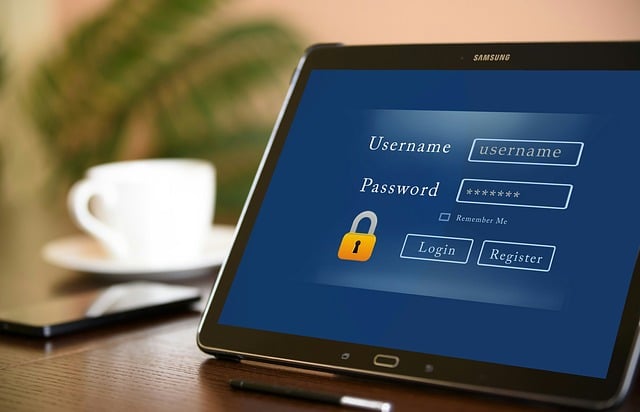 Modern technology has made it easier than ever for employees to work from home and still remain connected to their place of employment. Using remote employment has actually become a popular trend over the last ten years, especially since selling to the global market has become such an important factor in a business being competitive. Many businesses have found that they can minimize their expenses and attract international customers with more attractive prices if they decrease their overhead by allowing workers to remotely commute.
Modern technology has made it easier than ever for employees to work from home and still remain connected to their place of employment. Using remote employment has actually become a popular trend over the last ten years, especially since selling to the global market has become such an important factor in a business being competitive. Many businesses have found that they can minimize their expenses and attract international customers with more attractive prices if they decrease their overhead by allowing workers to remotely commute.
Despite the many benefits of using remote employees, there are downsides. Many employers considering this trend wonder how they can ensure workplace safety when the employee’s physical workplace is their own home. Another consideration is the degree of employer liability in remote employment.
Fortunately, OSHA has addressed some of the safety issues surrounding remote employment. According to OSHA guidelines, employers are required to maintain a safe workplace, even for employees working from their own home. OSHA will not require an employer to inspect a remote employee’s home worksite, nor inspect it themselves.
However, OSHA may inspect the worksite of an employee that’s performing an at-home job on behalf of their employer if it possibly involves health or safety hazards and there’s a complaint. A record of all occupational illnesses and injuries must be kept on all at-home workers if an employer is subject to OSHA record keeping requirements. Keeping in mind that OSHA compliance measures shouldn’t involve controlling the home worksite of employees, employers might need to take some additional practical measures to ensure OSHA compliance.
As far as safety compliance goes, the absence of immediate supervision for remote workers is one of the main problems employers face. Experienced, highly-trained, long-term employers are generally the worst offenders when it comes to taking safety risks. This group of employees often become complacent due to the fact they’re so accustomed and comfortable with their job, feel they’re familiar with the job’s hazards, and might have escaped disciplinary action when ignoring safety procedures or taking shortcuts in the past.
One of the best ways that employers can counteract the above dangerous attitude toward safety is by using a holistic approach to safety. Employers should focus and place great importance on each individual employee actively participating in the safety process and taking responsibility for their own safety. Whether at home, on the road, or at a remote jobsite, remote employees need to be ready, willing, and able to take the appropriate actions to protect themselves in any given situation.
Employers will need employee support to make any approach to safety successful, which means that employers must have total employee involvement in the safety process. Involve your remote employees in the process of determining what’s needed to prevent injury to themselves and others during remote location work. Most employers find that the experience and firsthand knowledge of their employees is actually very advantageous in creating safe remote worksites.
Remember, employees that understand the value of safety are more likely to be motivated and willing participants. They’re also more apt to embrace safety behaviors for the longevity of their employment. Employers can reinforce their employee’s positive attitude about safety by having electronic or person-to-person safety counseling in place and ensuring safety managers are encouraging safety participation.
Read more

When you face what appears to be a minor claim, have you ever been tempted just to handle it yourself? After all, the loss is minimal, and you’re “saving” your insurance coverage for when you really need it. Some contractors also feel that filing too many small claims could increase the risk of losing the policy, or driving up their premium.
However, there’s more to consider. Bear in mind that every policy contains language to the effect that “No insured will, except at that insured’s own cost, voluntarily make a payment, assume any obligation, or incur any expense, other than for first aid, without our consent.” This means that that if you pay a small claim yourself, and anything goes wrong, the insurance company can say, “You’re on your own.”
For example, suppose someone walks through your job site and steps on a nail. It appears to be a minor puncture wound, and you agree to pick up the cost of an emergency room visit. You might feel that you’ve closed this incident quickly. However, a few weeks later, the injured person calls to say they have a raging infection in their foot and the doctor is checking them into the hospital for what proves to be a long and expensive stay.
If you then report this claim to your insurance company for the first time, will they step in and take over, or tell you that since you never informed them of the incident they’re not responsible? Even if the insurance company pays the claim, you’ve run an unnecessary risk.
What you should have done – as the policy wording suggests – is to inform your insurance company immediately and ask its consent for you to pay the claim. This approach would have made a substantial difference because notifying the company of the claim fulfills your obligations under the policy.
Why go it alone when you have a partner waiting to help?
Read more
 Your small business expenses and personal expenses should stay separate. However, it’s easy to spend business funds for personal expenses, which can affect your personal credit. Understand the business credit mistakes that put your personal credit at risk.
Your small business expenses and personal expenses should stay separate. However, it’s easy to spend business funds for personal expenses, which can affect your personal credit. Understand the business credit mistakes that put your personal credit at risk.
Start or Fund Your Business With Personal Credit Cards
To get your business of the ground, you may use your personal credit cards. Whether you charge a few hundred or a few thousand dollars, this financing option could cost you.
Open a business credit card to get your business running. As an alternative, ask for trade credit where your suppliers agree to give you 30 days to pay off the balance of your bill. These steps separate your personal and business finances and can assist you in getting financing in the future with a favorable interest rate and terms.
Use Personal Guarantees
Business financing or credit is usually only available if you give a personal guarantee that you’ll repay the money. Those guarantees will show up on your personal credit reports, though, and could affect your credit score and your ability to get credit in the future.
Make an honest effort to never borrow more than you can repay. Don’t default on business loans, either. Wise financial management now assists you in obtaining future funding.
Make Late Payments
Sometimes, you can’t pay bills until your customers pay, and if they pay late, then you pay late. Other times, you may forget to make a payment. One late payment might not be a big deal, but two can negatively impact your personal credit.
Set aside enough money to pay several months of bills on time. Also, use automatic bill pay when possible and have the payment draft from your business bank account a few days before the due date. Stay current on all payments as you protect your credit.
Max Out Your Business Credit Cards
Certain business credit card providers will report your payment history to consumer credit agencies. Late payments and maxing out your credit card will have a negative effect on your credit score.
Always leave a cushion on your credit cards and resist the temptation to charge your full credit amount. Consider making early payments and paying twice a month as you lower your balance, too. You may also want to use a business credit card that does not report to personal consumer credit agencies.
Your small business can ruin your personal credit. Reduce your risk by separating your accounts. The way you structure your business can protect you, too. Talk to your financial advisor for more information on how to protect your personal credit as you build your small business.
Read more

Agricultural workers are at a serious risk of injury or death when installing, climbing into, fumigating, entering, filling or emptying a silo. Because of the nature of the conditions present, workers may be exposed to hazards such as a lack of oxygen, toxic gases and grain entrapment.
To reduce worker risk of injury, properly train workers and remind them frequently of the following safety recommendations:
- Avoid entering a silo unless it is absolutely necessary.
- Complete tasks outside of the silo whenever possible.
- Have a coworker close by in case of an emergency.
- Never smoke or cause sparks near a silo, especially if the air humidity is low.
- Wear respiratory protection when appropriate.
- Stand at a safe distance when filling or emptying a silo.
- Use an approved fall restraint system and harness when climbing a silo.
- Ventilate a fumigating silo before entering.
- Conduct regular safety inspections of silos.
For more farm and ranch safety tips, contact Scurich Insurance today.
Read more

Each year, thousands of businesses, schools and other establishments are mailed suspicious items (e.g., unmarked packages) or are the target of bomb threats. These threats can be made via phone calls, letters, social media channels, emails or other similar means.
Bomb threats and suspicious items are often used to cause alarm, panic, disruption or, in extreme cases, direct harm. However these threats are made, organizations of all kinds need to take them seriously and know how to respond appropriately.
What to Do If You Receive a Bomb Threat
Businesses often wrongly assume they aren’t at risk of a bomb threat. However, the truth is that no organization is 100 percent safe from malicious attacks or threats, making proper preparation all the more important. In the event that your organization receives a bomb threat – whether it be over the phone, via email or another means – follow these procedures.
Threats Made Over the Phone
- Remain calm. Keep the caller on the line for as long as possible, and don’t hang up even if the caller does.
- Signal or pass a note to another staff member, instructing them to notify the authorities. If this isn’t possible, call 911 from another phone after the caller hangs up.
- Document as much information about the call as possible. Details related to a caller ID number, the wording of the threat, the time of the call, background noises on the caller’s end, and the tone and inflection of the caller can all aid investigators. If possible, ask questions to infer specific details about the threat itself, including:
- Who is making the threat and where they are calling from
- The type of device and when it might go off
- What the device looks like
- Where the device is located
- Who the target is
- Record the call if possible.
- Be available for interviews.
- Follow any instructions from facility supervisors and local authorities. These individuals will also provide specific guidance related to facility lockdowns, searches or evacuations.
Threats Made Via Email, Online Platforms, the Mail or Other Source
- Call 911.
- Preserve the threat. If the threat is made online, take a screenshot. If the threat is made through the mail, store it in a safe place and handle it as minimally as possible.
- Note where the threat was found, who found it and when they found it.
- Wait for further instructions from the proper authorities.
In the event of a threat, staff members should avoid using two-way radios, cellular phones or any other electronics, as signals from these devices could potentially detonate a bomb. In addition, you should avoid activating alarms or evacuating the building until the proper authorities evaluate the threat. Law enforcement officials will direct the evacuation if one is necessary.
What to Do If You Find or Receive a Suspicious Item
In general, a suspicious item is any item – like a bag or package – that is believed to contain explosives, improvised explosive devices or hazardous materials. When it comes to identifying these items, you should watch out for unexplainable or unusual wires, electronics, sounds, vapors, mists or odors.
It is not uncommon for establishments to find or receive suspicious items and, while they may end up being harmless, it’s good practice to be overly cautious. As a good rule of thumb, any item that is Hidden, Obviously suspicious and not Typical (HOT) should be deemed suspicious.
In the event that your organization finds or receives a suspicious item, you should:
- Remain calm.
- Avoid touching, tampering or moving the item.
- Notify the proper authorities and your facility supervisor. Follow any and all of their instructions carefully.
Plan Ahead and Stay Safe
When it comes to bomb threats and suspicious items, every situation is unique. Typically, facility supervisors and law enforcement officials will be in the best position assess the situation, determine if a real risk is present and provide instruction on how to respond.
For even more protection, businesses should review guidance provided by the Department of Homeland Security and the Department of Justice. Doing so can help you better prepare for potential threats. For more workplace safety advice and risk mitigation tips, contact Scurich Insurance today.
Read more

As technology becomes increasingly important for successful business operations, the value of a strong cyber liability insurance policy continues to grow. The continued rise in the amount of information stored and transferred electronically has resulted in a remarkable increase in the potential exposures facing businesses.
In an age where a stolen laptop or data breach can instantly compromise the personal data of thousands of customers, protecting your business from cyber liability is just as important as some of the more traditional exposures businesses account for in their commercial general liability policies.
Claims Scenario: Outsourcing Gone Wrong
The company: A national construction company that outsources some of its cyber security protections
The challenge: A construction firm partnered with a third-party cloud service provider in order to store customer information. While this service helped the company save on server costs, the third-party firm suffered a data breach.
As a result, the construction firm had to notify 10,000 of its customers and was forced to pay nearly $200,000 in incident investigation costs. The incident was made worse by the fact that the firm did not have a document retention procedure, which complicated the incident response process.
Cyber liability insurance in action: Following a data breach or other cyber event, the right policy can help organizations recoup a number of key costs. Specifically, cyber liability policies often cover investigation and forensics expenses—expenses that can easily bankrupt smaller firms who forgo coverage.
What’s more, when third parties are involved, managing litigation concerns can be a challenge. By using cyber liability insurance, organizations have access to legal professionals well-versed in cyber lawsuits and response.
Claims Scenario: Pardon the Interruption
The company: An online retail store that relies heavily on e-commerce
The challenge: A small-sized, online retailer partnered with a data centre to host its website and store its data. This is not uncommon, as many small businesses don’t have the IT infrastructure to host products, process payments and fulfil orders on-site.
Unfortunately, the data centre was targeted in a distributed denial-of-service (DDoS) attack. As a result of this attack, the retailer’s website went down for several days. While functionality was eventually restored, business interruption costs from lost sales and website downtime was over $165,000.
Cyber liability insurance in action: DDoS attacks are one of many weapons cyber criminals use to infiltrate and disrupt businesses. These attacks can impact any organization that owns a website, regardless of where it’s hosted.
Cyber liability insurance is one of the only protections organizations have against costly DDoS attacks and similar disruptions. This is because cyber policies offer business interruption loss reimbursement. Following a disruption caused by a cyber event, policies kick in and help organizations recover from any financial losses.
Benefits of Cyber Liability Insurance
- Data breach coverage—In the event of a breach, organizations are required by law to notify affected parties. This can add to overall data breach costs, particularly as they relate to security fixes, identity theft protection for those impacted by the breach and protection from possible legal action. Cyber liability policies include coverage for these exposures, thus safeguarding your data from cyber criminals.
- Business interruption loss reimbursement—A cyber attack can lead to an IT failure that disrupts business operations, costing your organization both time and money. Cyber liability policies may cover your loss of income during these interruptions. What’s more, increased costs to your business operations in the aftermath of a cyber attack may also be covered.
- Cyber extortion defence—Ransomware and similar malicious software are designed to steal and withhold key data from organizations until a steep fee is paid. As these types of attacks increase in frequency and severity, it’s critical that organizations seek cyber liability insurance, which can help recoup losses related to cyber extortion.
- Legal support—In the wake of a cyber incident, businesses often seek legal assistance. This assistance can be costly. Cyber liability insurance can help businesses afford proper legal work following a cyber attack.
When cyber attacks like data breaches and hacks occur, they can result in devastating damage. Businesses have to deal with business disruptions, lost revenue and litigation. It is important to remember that no organization is immune to the impact of cyber crime. As a result, cyber liability insurance has become an essential component to any risk management program.
Cyber exposures aren’t going away and, in fact, continue to escalate. Businesses need to be prepared in the event that a cyber attack strikes. To learn more about cyber liability insurance, contact Scurich Insurance today.
Read more
 Modern technology has made it easier than ever for employees to work from home and still remain connected to their place of employment. Using remote employment has actually become a popular trend over the last ten years, especially since selling to the global market has become such an important factor in a business being competitive. Many businesses have found that they can minimize their expenses and attract international customers with more attractive prices if they decrease their overhead by allowing workers to remotely commute.
Modern technology has made it easier than ever for employees to work from home and still remain connected to their place of employment. Using remote employment has actually become a popular trend over the last ten years, especially since selling to the global market has become such an important factor in a business being competitive. Many businesses have found that they can minimize their expenses and attract international customers with more attractive prices if they decrease their overhead by allowing workers to remotely commute.

 Your small business expenses and personal expenses should stay separate. However, it’s easy to spend business funds for personal expenses, which can affect your personal credit. Understand the business credit mistakes that put your personal credit at risk.
Your small business expenses and personal expenses should stay separate. However, it’s easy to spend business funds for personal expenses, which can affect your personal credit. Understand the business credit mistakes that put your personal credit at risk.

